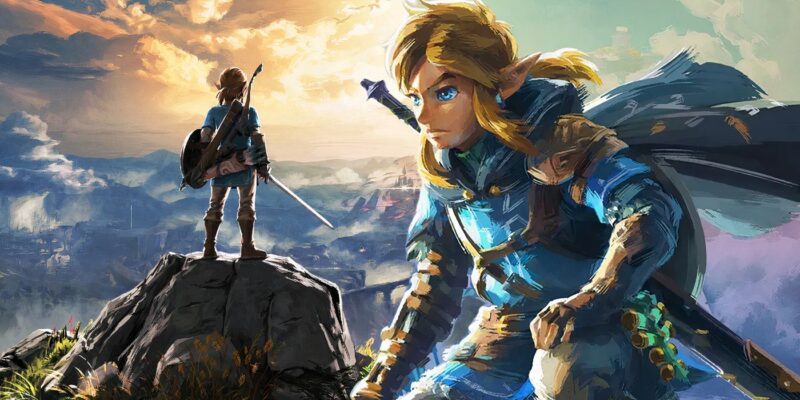How The Legend of Zelda Series Created One of Gaming’s Most Iconic Characters
November 14, 2024

The gaming industry has seen a plethora of characters come and go, but few have left an indelible mark like Link, the hero of the “Legend of Zelda” series. Since his debut in 1986, Link has become not only the face of the franchise but also a symbol of adventure, bravery, and heroism in the gaming world. This article explores the evolution of Link, the creative influences behind his design, and the legacy he has established, ultimately creating one of gaming’s most iconic characters.
1. The Birth of Link: A Vision from Shigeru Miyamoto
The Legend of Zelda was conceived by Shigeru Miyamoto, one of Nintendo’s most revered game designers. Inspired by his childhood adventures exploring the forests and caves near his home in Kyoto, Miyamoto aimed to recreate the sense of discovery and exploration in a video game format. In the original design, Link was envisioned as a small, brave warrior with a big destiny.
Link was originally named “The Legend of Zelda’s Hero” and was meant to represent the everyman: someone relatable yet destined for greatness. His iconic green tunic and pointed cap symbolize the classic image of a hero while lending him a timeless quality that resonates with players around the globe.
2. Link’s Iconic Design: From Sprite to 3D Model
In the first game, released for the NES, Link’s character was depicted in 2D sprites, which limited his design possibilities. However, even with these limitations, the developers were able to convey a strong sense of adventure through his animations and the game’s environment. The vibrant colors and imaginative landscapes helped to develop Link’s personality as a curious and courageous character.
As technology advanced, so too did Link’s design. The jump to 3D in “The Legend of Zelda: Ocarina of Time” (1998) allowed for deeper storytelling and character development. Players could not only see Link’s evolution in appearance but also witness his personality grow through more detailed interactions and dialogue. His character design became more expressive as developers incorporated subtle emotions into his animations, reinforcing his status as a hero worthy of player investment.
3. The Growth of Link: Character Development Over the Years
Unlike many game protagonists, Link does not have a fixed background or personality; rather, he is a vessel for the player’s own adventures. This unique trait allows Link to inhabit various roles across different games, from a brave hero in “Breath of the Wild” to a young boy in “The Wind Waker”. His adaptability has made him relatable to numerous generations of gamers.
Each installment of the series presents a different facet of Link’s character, showcasing his evolution through various gameplay mechanics and storylines. In “Majora’s Mask” (2000), Link’s quest is marked by a sense of urgency and despair, deviating from the traditional hero’s journey. This game explored themes of loss and responsibility, effectively shaping how players perceive Link – not merely as a hero, but as a nuanced character grappling with weighty circumstances.
4. Narratives and Themes: Heroism and Courage
The stories surrounding Link have always focused on themes of heroism, courage, and the fight against evil. Each game introduces elaborate narratives that intertwine Link’s fate with that of Princess Zelda and the land of Hyrule. These narratives resonate deeply with players, offering a rich tapestry of lore that keeps the franchise beloved.
The Zelda series often presents Link with complex challenges, reflecting the struggles faced by individuals in real-life. Moreover, the recurring themes of friendship, sacrifice, and perseverance transcend beyond mere gameplay – they foster community, breathing life into the series in ways that a single player cannot achieve alone. The legacy of these themes and their power to connect audiences is what truly solidified Link as an iconic character in gaming culture.
5. Cultural Impact and Legacy
Today, Link stands as a cultural icon, recognized not only among avid gamers but also in mainstream media. He has made appearances in various forms of media, such as cartoons, merchandise, and crossover games like “Super Smash Bros.” His impact transcends gaming and affirms the relevance of video game characters in cultural discussions.
The Legend of Zelda series continues to inspire games, fostering creativity and innovation in their design. Many game creators have drawn inspiration from Link’s adventures, leading to a new generation of daring heroes in the industry. His legacy will endure as long as video games are played, serving as a beacon for aspiring game designers and storytellers worldwide.
Final Thoughts
Link’s journey from a simple sprite to a multi-dimensional hero illustrates the profound impact character design, storytelling, and cultural resonance can have on the gaming industry. As the Legend of Zelda series continues to evolve, with new adventures on the horizon, Link’s legacy will endure, reminding us that heroes come in many forms and that every adventure begins with a courageous heart.
As we look forward to future installments, we celebrate Link not merely as a character but as an enduring symbol of adventure, resilience, and the quest for knowledge in the vast world of gaming.








